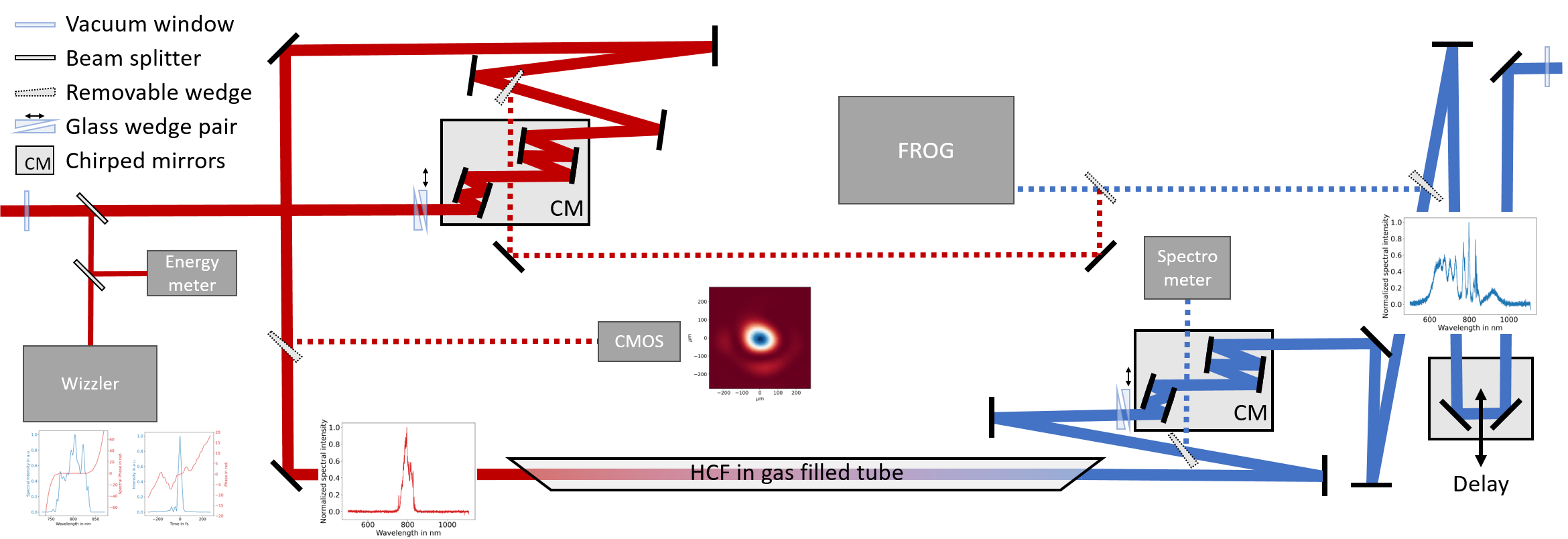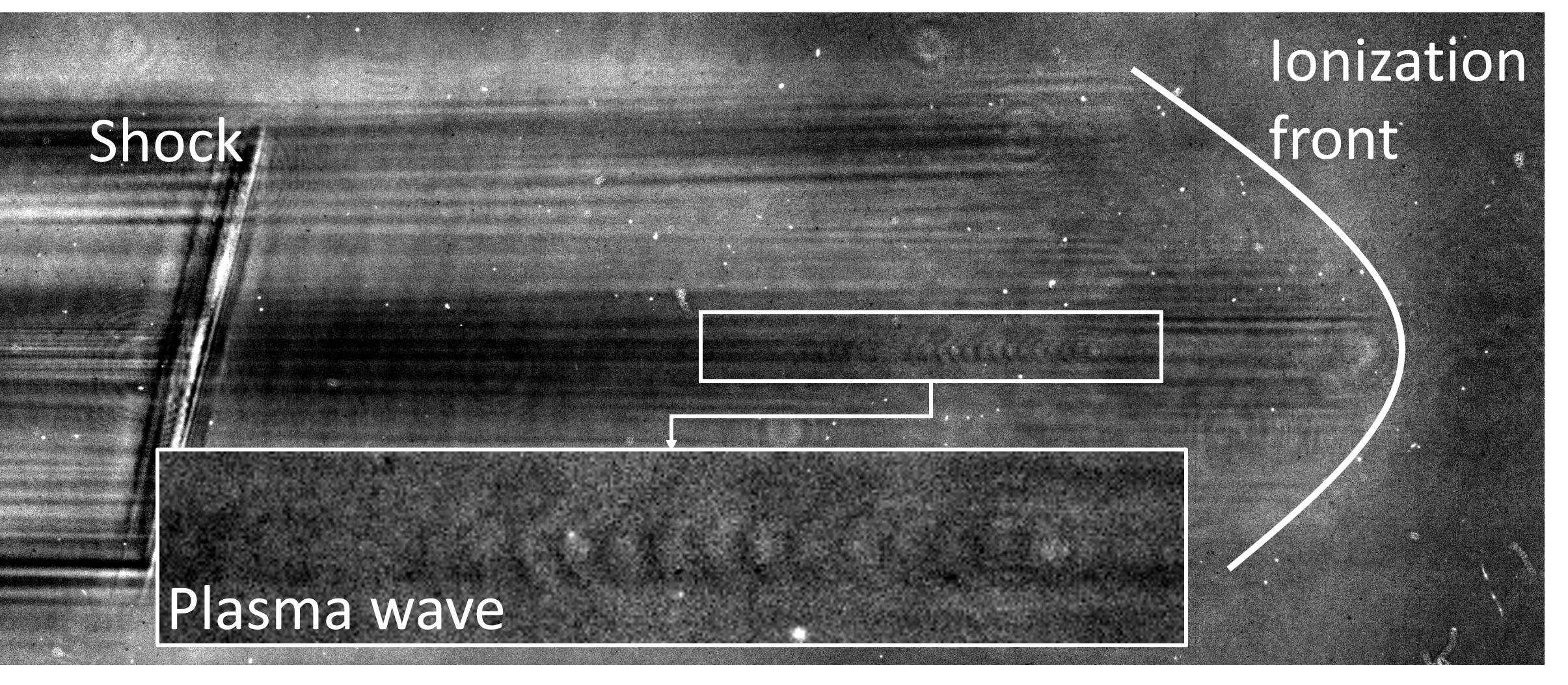Few-cycle Probe
In LWFA (Laser Wake Field Acceleration) experiments the detailed features and characteristics of the plasma distribution are essential for understanding the acceleration mechanisms and important to optimize this process [1].
A probe beam is split off the main beam and thus features the same properties, but much less energy. Using the probe beam in transverse direction to the driving laser enables taking snapshots during the experiment. In these shadowgraphs the probe pulses are integrated in time over their length and thus limit the temporal resolution when imaging the interaction between laser and gas.
It is desired to resolve the plasma’s evolution just after the main pulse ionized the gas in more detail. Generating a few-cycle pulse (broadened and compressed) reduces the pulse length of the probing beam and improves the temporal resolution. Fig.1 gives an overview of the setup to generate the spectrally broad and temporally short probe pulse and to quantify beam characteristics.

Fig.1: Setup for few-cycle probe generation in a hollow-core fiber.
During the LWFA experiments the target area is illuminated by the probe beam and the laser-gas interaction in the target is observed by multiple cameras. A first arm takes 1:1 shadowgraphy images which serve as an overview and help during positioning in the experiments. With a Nomarski prism in the second arm interferograms are taken, which provide information about the plasma density. In the third arm a magnified image is taken through a microscope objective. Probing with the few-cycle pulses, a periodic structure in the laser generated plasma channel is observed. The wavelength of this plasma wave is proportional to the local plasma density.

Fig.2: Typical few-cycle shadowgram showing a shock for injection, the ionization front and a plasma wave.
References
- Nonlinear plasma wavelength scalings in a laser wakefield accelerator, H. Ding et al., Physical Review E 101 (2), 023209 (2020)

